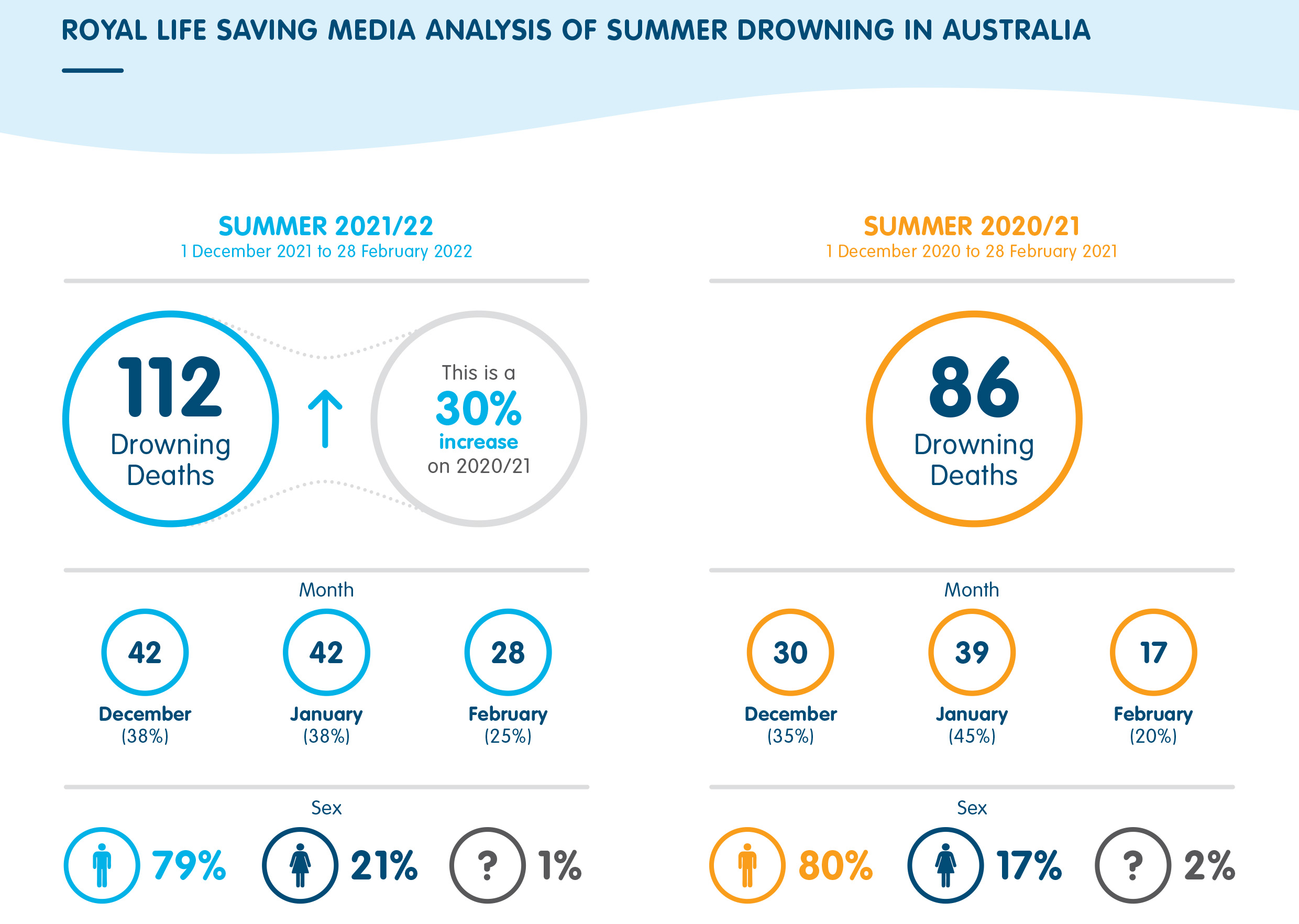Published 24 March 2022
Extreme weather pushes summer drowning numbers over 100
Extreme weather has pushed the Australian Summer Drowning Toll up by 30 per cent this year, with 112 people losing their lives to drowning.
The wild weather, with heavy rain and flooding marked the start and end of summer, and heat waves over the country during the Christmas period, pushed the death toll up from 86 deaths last summer.

Tragically, 22 deaths were due to flooding-related incidents, half of those occurring in the last few days of February. Flooding-related drowning occurred in the Northern Territory, NSW, and Queensland. More than half of all summer drowning deaths in Queensland were flooding-related.
Royal Life Saving Society – Australia CEO Justin Scarr said that every life lost was a tragedy, with the impacts felt far and wide across families and communities.
“Our thoughts are with all the communities who have recently experienced flooding and lost someone during these devasting events. With more rain predicted over autumn, we urge people not to drive through or swim in flood waters,” Mr Scarr said.
For recreational drowning deaths, the Christmas and New Year holiday break was the deadliest time for drowning. The highest number of drowning deaths in a single day occurred on Sunday 2nd January (7) and Christmas Day (6), coinciding with public holidays, state borders re-opening and hot and dry weather across the country during this period.
Royal Life Saving research shows that nationwide, visitor numbers to aquatic locations have bounced back to pre-covid levels (summer 2019/20), with the highest number of visitors recorded on 2nd January, the same day that recorded the highest number of drowning deaths.
“After two years of missed family gatherings and opportunities to catch up with friends, we knew Australians were looking forward to getting out and about this summer. It is devastating to see some of those trips end in heartbreak,” Mr Scarr says.
When compared to last year, more drowning occurred inland waterways (51% compared to 29% in 2020/21). Most people got into difficulty while swimming and recreating (28%), highlighting the importance of swimming and survival skills in all environments. Royal Life Saving research released in December showed that one in four adults are weak swimmers or can’t swim at all.
Eleven children aged 0-17 years drowned over the summer, a decrease from 15 the previous summer. In contrast, the number of adults aged 35 years and over drowning increased this summer compared to the previous summer.
“We are deeply concerned about the long-term impacts of children missing out on swimming lessons throughout the pandemic. A coordinated response is needed to ensure we get the most vulnerable back into lessons as soon as possible,” Mr Scarr said.
“It is vital all Australians are given the opportunity to learn to swim and survive in the water. It’s never too late to learn.”
Royal Life Saving is reminding Australians to enjoy the water safely year-round. Follow these five tips to enjoy the water safely:
- Always supervise children around water
- Avoid alcohol around water
- Wear a lifejacket when boating and fishing
- Avoid going alone
- Know the conditions
- Don’t drive through flood waters
Key points
- 112 people drowned over the summer (1st December 2021 to 28th February 2022), 30% increase from last year.
- 20% of deaths were flooding related.
- Without flooding, the number of recreational drowning deaths was up by six per cent.
- The Christmas and New Year holiday period was the deadliest time for drowning.
- Children accounted for 11%, a decrease from the previous summer.
- 51% drowned at inland locations (rivers, lakes, dams, ponds).
- 45% drowned in coastal locations (beaches, harbour, ocean, rocks).
- Compared to last summer, drowning deaths increased in Queensland, NSW, South Australia and Tasmania.
- Over half of all drowning deaths in Queensland were flooding related.
- Drowning deaths decreased in ACT, Victoria and Western Australia from summer 2020/21.
- Western Australia experienced severe heatwaves with consecutive days of over 40°C in many parts of the State.
For more information about Royal Life Saving, visit www.royallifesaving.com.au
